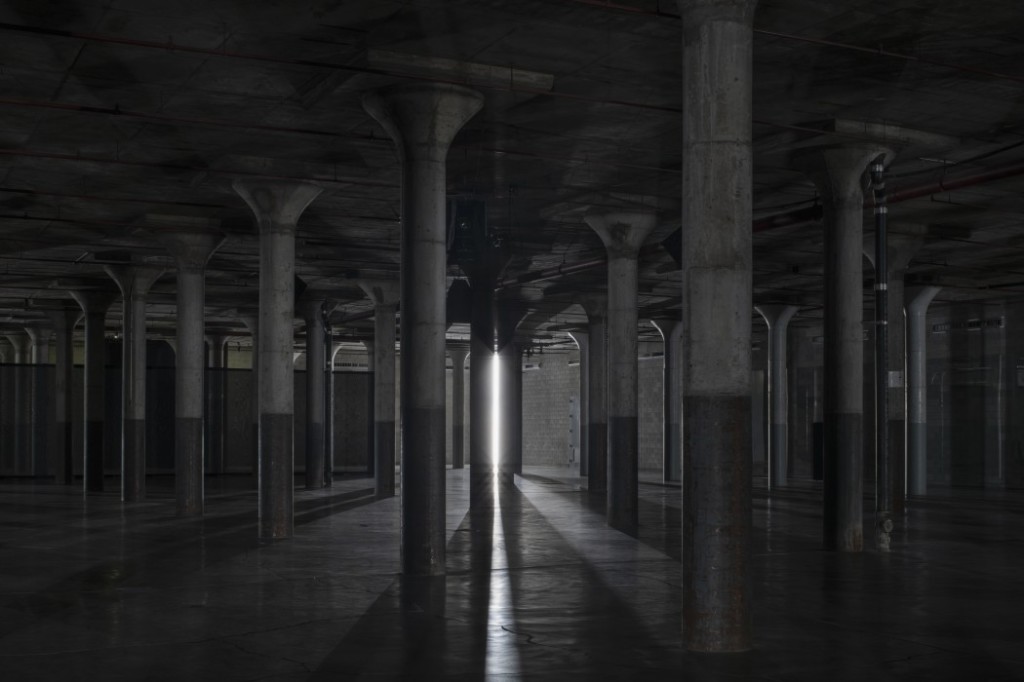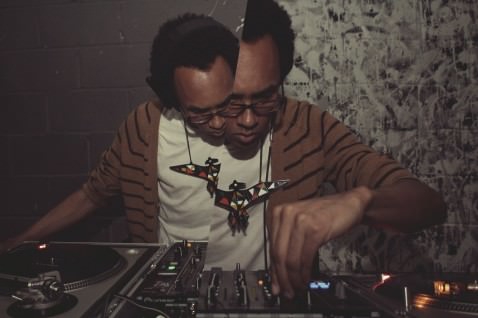The themes can all seem like disconnected threads – social isolation, pandemic, the origins of techno, racism – at least in the blur of news cycles and social media. But Jace Clayton aka DJ Rupture makes a portrait that brings it all together – landing at just the right time.
At top: Dia:Beacon, photo Eva Dietch.
Techno legend Carl Craig has achieved some epic moments. I wouldn’t say he had the greatest fortune on timing in this case – his work opened at Dia:Beacon on March 6. Happily, Dia has extended that exhibition through summer 2021. I hope I get to see it in person. (Can I self quarantine somewhere along the Hudson in a tent or something?)
It sounds like something wonderful – linking a lot of our passions, from Detroit techno to Berghain to LaMonte Young, all from an artist who reimagined (and changed the way we heard) Kraftwerk.
And it’s personal, too – he works in his experience with tinnitus. (That persistent ringing might also be a way to understand the pain of people of color in America, through something tangible.)

Drawing from his history as an internationally touring DJ, Craig will bring the visitor into and out of sonic spaces that evoke the shared experience that takes place in clubs and venues of influence to him, including Berghain’s Panorama Bar in Berlin and the now-closed Yellow in Tokyo, tapping into an archive of emotional memory. Dissonant music will intermittently fill the space, reflecting Craig’s personal experience with tinnitus, a condition caused by exposure to loud sounds that produces a persistent ringing or buzzing noise. The music intensifies and recedes, creating a durational arc—from elation to disorientation—reflective of the euphoric rise and the subsequent emotional comedown inherent to the communal rush of the dance floor. With Party/After-Party, Craig has created an audio experience that is reflective of our ambiguous contemporary existence.
Technology, modular repetition, and serialism define the intersection between techno and Minimalist sound—the latter of which Dia has been instrumental in supporting, such as through its decades-long partnerships with La Monte Young and Max Neuhaus. Techno’s history was molded by the unique technological and aesthetic conditions at the outset of Minimalism. Artists working in both sound-based forms share a foundational interest in reflecting and repurposing the industrial soundscapes of urban environments.
https://www.diaart.org/exhibition/exhibitions-projects/carl-craig-partyafter-party-exhibition
It’s not a great time to travel to the Dia in New York, but hopefully some people are taking the time to sit down and read – in print or online. Because legendary artist and thinker Jace Clayton has an in-depth review for none other than Artforum:
WHERE’S THE PARTY
Jace Clayton on Carl Craig at Dia:Beacon
A writer like Clayton can make us feel like we’re there, even when we’re not:
A slowly evolving techno song, stripped down to basic beats and minimal synths and shorn of almost all melody, subtly morphs in tandem with the shifts in lighting; window slats are automated to open and let in natural light every few minutes, simulating daybreak at a warehouse party. A few visitors briefly broke into spontaneous dance, as if out of respect for the techno godfather, although the overall feel of Party/After-Party is one of introspection.
You also need someone like Jace to put into words what techno is. Just saying techno is black music – that’s important, and maybe that goes well on Twitter. But it sounds hollow. Jace’s writing brings that alive – and remember, this is just what he casually drops into an art mag story:
GLOBALIZED FOLK MUSIC invented by middle-class suburbanites who conjured Rust Belt futures out of Japanese consumer electronics in the ’80s; the drab untz-untz that soundtracks mindless weekender hedonism; a polymorphously perverse challenge to Western musical propriety, whose African American roots are simultaneously underacknowledged and overmythologized: Techno is all this and more.
But what’s especially significant about his review is that it isn’t just about the art. He sees it as a window to loneliness – from the way the installation acoustically suffers if there aren’t people in the space, to the poetics of the work itself.
“The isolation that Craig wished to communicate now has a monstrous, radical mirror image,” Clayton writes.

In that sentence, and presumably, whenever he submitted the text, the main crisis in the headlines was COVID-19 – even if racism lurked, as ever, below the fold.
Now we recognize both that and the isolation of racism, of news cycles intended to demoralize and dehumanize people into inaction.
Maybe somewhere in that elegiac prose for sine waves and pandemic, there’s also a potent metaphor for what we need to become human again in how to find our voice again.
“Craig’s work was poised to speak so powerfully to this moment because dance music is powered by the heat, promise, and unpredictability of bodies. We enter crowds to become communicable. Shared vulnerability is the only thing that makes a “we” exist.”
And for all of us who love techno and love LaMonte Young and all the things that bring bodies together, I hope we reflect in this moment on how to bring the bodies back – and how to find our own vulnerability.
We’re going to need it.
Online article in full, though now I might need to buy myself the print edition:
https://www.artforum.com/print/202005/jace-clayton-on-carl-craig-at-dia-beacon-82809
Jace Clayton you can follow on Twitter:
Now might be the perfect time to buy yourself his 2016 book, Uproot: Travels in 21st-Century Music and Digital Culture, which follows him from Sao Paolo brothels to the American Museum of Natural History. I still believe in travel – by reading if not by airplane.